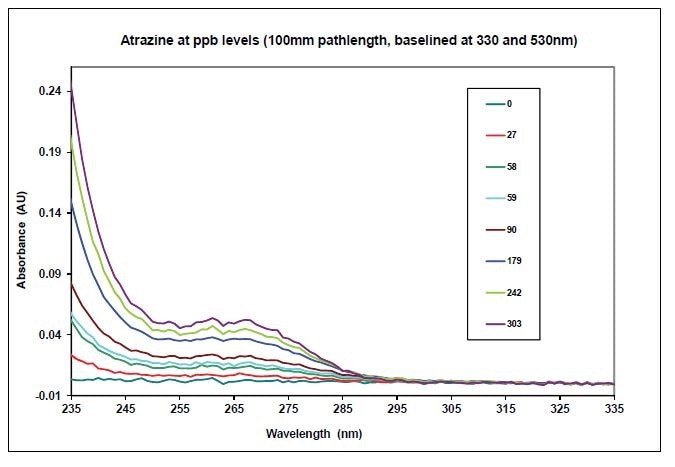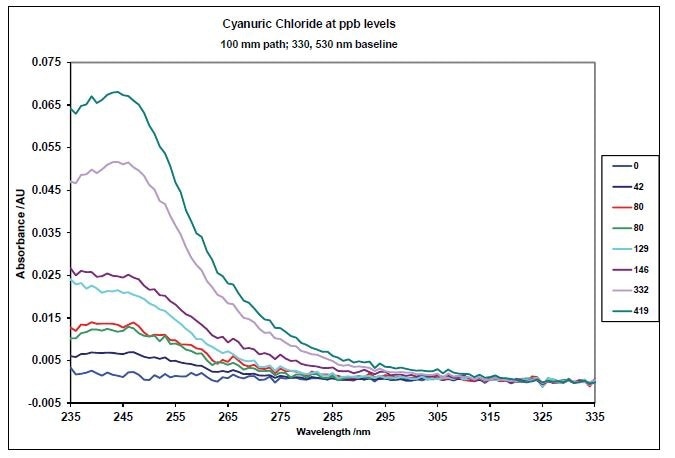Atrazine, a triazine, is a restricted use pesticide in America. It is a commonly used herbicide in the United States, especially in the mid-western “corn belt.” It is considered slightly toxic, believed to be an endocrine disruptor and is a suspect carcinogen.
Atrazine is a common contaminant in ground and surface water where it is slow to degrade. Agricultural runoff leads to the majority of surface water contamination. The US EPA Maximum Containment Level Goal (MCLG) for drinking water is 3 ppb. The UV-Vis region of the electromagnetic spectrum displays electronic transitions and is especially useful for viewing conjugated and aromatic molecules.
By measuring the UV spectra of a series of samples of known triazine concentrations, quantitative models can be developed which will allow the measurement of future samples based only on their UV spectrum.
Analyzer systems from Process Insights use fiber optics to allow the sample probe to be located in remote locations away from the spectrophotometer itself, potentially reducing the level of operator intervention and giving real time sample assessment.
Experimental
The triazines were initially diluted in isopropanol and then serially diluted with deionized water. The UV spectra were measured using a Process Insights Model 508 process UV-Vis spectrophotometer in a 100 mm path length flow cell, isopropanol is UV transparent.
The unit was referenced using water, allowing the spectral features attributed to the atrazines to be seen more easily. Figure 1 shows the absorbance spectra collected for atrazine itself baseline corrected at 330 and 350 nm.

Figure 1. Absorbance Spectra of Atrazine Baseline Corrected at 330 and 530 nm.

Figure 2. Absorbance Spectra of Propazine baseline corrected at 330 and 530 nm.

Figure 3. Absorbance Spectra of Cyanuric Chloride, a Triazine Precursor, Baseline Corrected.
Analysis
First derivative spectra preprocessing was employed to eradicate baseline shifts. Following this, PLS models were created for each chemical. The results are shown in the table below.
Table 1

Discussion
Using UV spectroscopy for the measurement of ppb level atrazine, propazine or cyanuric chloride concentrations in water is both quick and reliable using the Process Insights Model 508.

Model 508plus
This method minimizes the need for laboratory sample collection. Results are achieved in real-time (seconds) for triazine concentrations in aqueous streams.

This information has been sourced, reviewed and adapted from materials provided by Process Insights – Optical Absorption Spectroscopy.
For more information on this source, please visit Process Insights – Optical Absorption Spectroscopy.